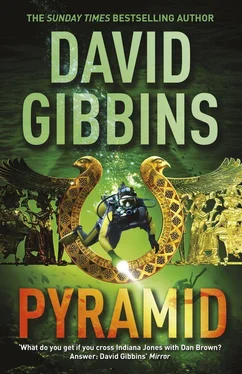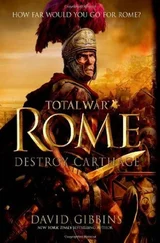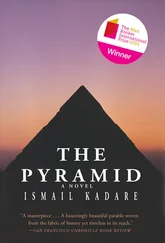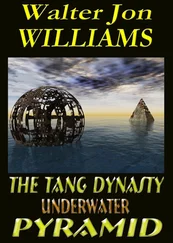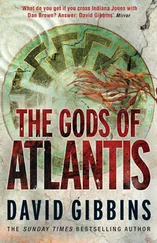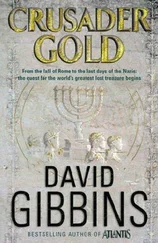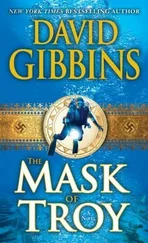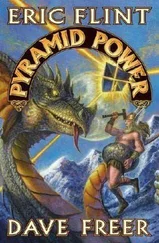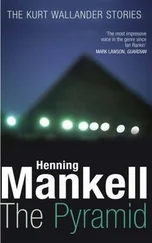Jack took out his phone and showed Hiebermeyer the screen saver, part of a fragmentary painting showing ducks flying out of a papyrus thicket, impressionistic in shades of blue. “I’ve still got this from when we last debated it, Maurice.” He glanced at Costas. “It’s a wall painting from Akhenaten’s new city of Amarna. It’s a typically Egyptian scene but very reminiscent in style of the Minoan wall paintings from Crete. Amarna also famously produced a cache of clay tablets that shows the extent of trade with the Aegean during this period. I argued that the link with Crete wasn’t just about trade, but that there were cultural influences as well. Akhenaten had turned the old Egyptian religion on its head and was clearly receptive to outside ideas. Now that I see what Maurice has found, it figures that he might have had Aegean mercenaries too. Akhenaten may have been something of a dreamer, but he was practical enough to survive as pharaoh for more than twenty years, so having a strong force of mercenaries who would not be swayed by the factions against him would have made a lot of sense.”
Hiebermeyer swivelled his chair and raised his hands in a gesture of surrender to Jack, and then cracked a grin. “You and I have debated it for years, and finally I’m forced to concede. It was a two-way process. Egypt influenced Greece, and now we know it also happened in reverse. And there’s even more. In the sixteenth century BC, the first pharaoh of the eighteenth dynasty, Ahmose I, made an astonishing dynastic marriage. A stone stele in the temple of Amun at Thebes describes his wife, Ahhotep, as Mistress of the Shores of Hau-nebut. That’s the first known use of the word Hau-nebut , the term for the Aegean lands, for Crete, that you see in the cartouche here. It goes on to say the following: ‘Her reputation is high over every foreign land.’ This leads me to the most astonishing revelation in our necropolis find.”
Costas had been peering again at the image of the tomb painting on Hiebermeyer’s screen. He coughed, pointing. “About those cuirasses. Those breastplates. I mean, breast -plates.”
Hiebermeyer swivelled back to the screen and grinned again. “I was wondering when you’d notice.”
“Not men in skirts.”
“Not men in skirts.”
“No,” Costas said, shaking his head. “These are girl mercenaries.”
“Good God,” Jack exclaimed, peering. “You’re right.”
“Feast your eyes on this, then.” Hiebermeyer swept the mouse, and the next charioteer in the army came into view, an astonishing sight. It was unambiguously a woman, her breasts bare above her cuirass, her head towering above the others. Her long hair was braided down her back, and she held swirling snakes above her head. Jack gasped. “It’s the Minoan mother goddess, the Mistress of the Animals.”
“Not quite, Jack. Look at that cartouche above her head. It’s exactly the same as the one for Ahhotep a century and a half earlier. ‘Not Mistress of the Animals, but Mistress of the Shores of Hau-nebut.’ ”
Jack’s mind raced. “What are you thinking, Maurice?”
“I’m thinking, forget all that romantic guff about the Minoans being peace-loving idealists. You just didn’t survive in the Bronze Age that way. The term Mistress of the Animals was made up by Sir Arthur Evans when he excavated Knossos and wanted it to be some kind of paradise, an idealized antidote to the ugly modern world of a hundred years ago. You English can be sentimentalists, Jack. Mistress of the Shores of Hau-nebut is undoubtedly a military term, like Count of the Saxon Shore for the late Roman defender of Britain. Crete was an island too, and that’s where her defenses lay. Your Minoan mother goddess was in truth a Boudica or a Valkyrie, a warrior queen.”
Jack’s mind raced. “Here’s a scenario. The volcano on Thera erupts in the fifteenth century BC, right? Minoan civilization is devastated, leaving Crete vulnerable to Mycenaean takeover. Shortly before that a Minoan queen, Ahhotep, marries an Egyptian pharaoh, Ahmose I. The bloodline of the Minoan rulers passes down not in Crete but through the eighteenth dynasty in Egypt. Maybe that fuels the brilliant mix of genius, military leadership, and iconoclasm that makes the New Kingdom stand out so much, peaking with Akhenaten and his wife, Nefertiti. Meanwhile, the warrior tradition of Minoan Crete, the female warrior tradition, survives the Mycenaean takeover, perhaps in the remote mountain fastnesses of the south. For generations those warriors sell themselves to the highest bidder, led by a woman the Egyptians knew by the old title of their first Minoan queen, Mistress of the Shores of Hau-nebut. How does that sound?”
Hiebermeyer opened his arms. “That’s one small corner of Egyptology conceded. One small corner.”
Jack was thinking the unthinkable. And King Minos was a woman . He put his hand on Hiebermeyer’s shoulder. “Congratulations, Maurice. Really brilliant. This might just lead to that joint book we’ve often talked about. Rewriting contact between Egypt and Crete in the late Bronze Age.”
“And putting women on the map,” Costas said, still staring at the charioteer. “Big-time.”
Hiebermeyer turned back to the computer, clicked the mouse, and called up the first image, showing the tomb with its contents. “There’s more to be found in there, Jack. A lot more. We’ve been working against the clock, and I’ve had to make just about the hardest decision of my life, to shut down the tomb and seal it. There are already too many other parts of the excavation ongoing that need to be finished up. I can’t even report the tomb discovery, as that would see the looters descend like vultures as soon as we leave the place. I’m not even sure about the book idea, Jack. What we’ve just discussed is going to have to remain our own speculation, as it’s too controversial to publish without the full excavation and appraisal of that tomb. We all know what happens when a theory like that gets put out prematurely and is ridiculed. It then takes ten times more evidence than is needed to make it stick.”
Hiebermeyer slumped forward, his head in his hands, looking defeated. For a moment Jack felt paralyzed, unable to think of anything to say that might help. He had a sudden flashback to their boyhood together at boarding school in England, swapping dreams about the great discoveries they would one day make as archaeologists. Those discoveries had come to pass, more than they could ever have imagined, and yet there still seemed as much to uncover as there ever had been. No single treasure was the culmination of the dream, and every extraordinary revelation spurred them on toward another. It seemed impossible that the perversity of extremism, of human self-destruction, should overtake that dream. Jack knew that if their friendship meant anything, he should do all he could to push Maurice through and see that their shared passion was never extinguished.
Costas put a hand on Hiebermeyer’s shoulder. “Don’t kill yourself over it, man. You’re doing the best you can. There’s light at the end of the tunnel.”
Hiebermeyer grasped his hand for a moment. “Thanks, Costas. You and Jack have seen it, haven’t you? That light underneath the pyramid. As long as we know it’s there, maybe there’s hope for us yet.”
Jack took out a memory stick and inserted it into Hiebermeyer’s computer. “I know you have to return to the necropolis as soon as you can, but I want to show you an image from our dive that you haven’t seen yet. I’d like Aysha in on this. Is she around?”
Hiebermeyer gestured at the door. “Outside on the quay, talking to our son on the phone. We sent him away to stay with my mother in Germany. This place has become too dangerous for a five-year-old. She said she’d come back in here when she finishes.”
Читать дальше
